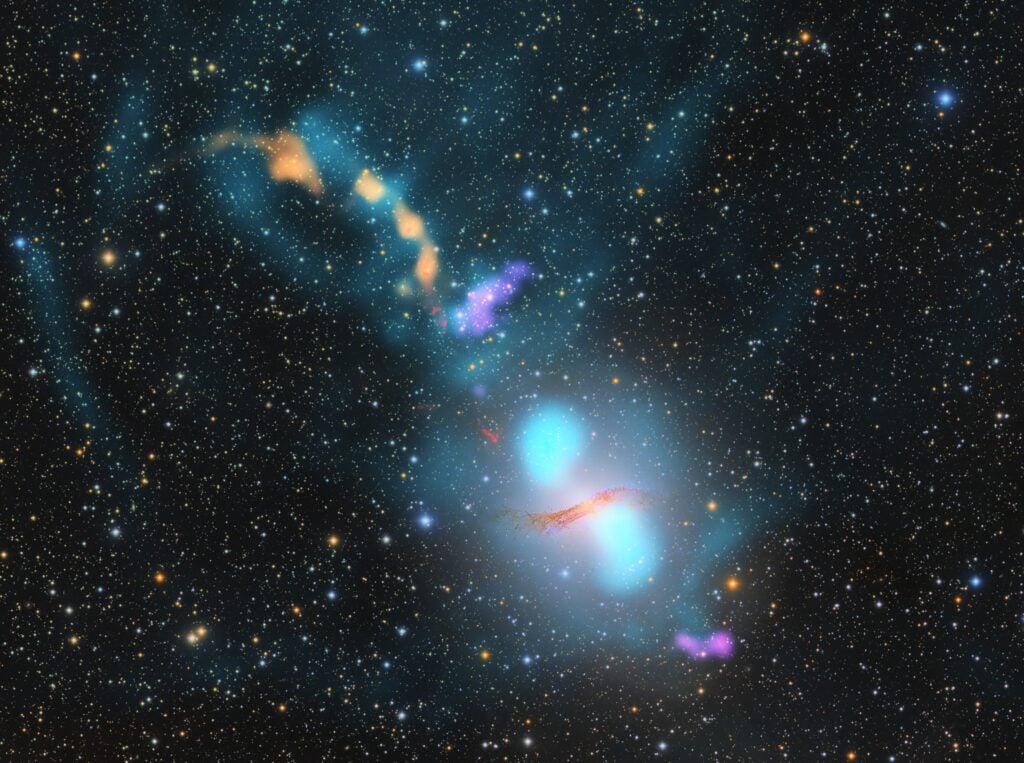The Independent's journalism is supported by our readers. When you purchase through links on our site, we may earn commission.
Astronomers capture eruption of supermassive black hole feeding
The Centaurus A galaxy is located about 12 million light years away from our planet

Your support helps us to tell the story
From reproductive rights to climate change to Big Tech, The Independent is on the ground when the story is developing. Whether it's investigating the financials of Elon Musk's pro-Trump PAC or producing our latest documentary, 'The A Word', which shines a light on the American women fighting for reproductive rights, we know how important it is to parse out the facts from the messaging.
At such a critical moment in US history, we need reporters on the ground. Your donation allows us to keep sending journalists to speak to both sides of the story.
The Independent is trusted by Americans across the entire political spectrum. And unlike many other quality news outlets, we choose not to lock Americans out of our reporting and analysis with paywalls. We believe quality journalism should be available to everyone, paid for by those who can afford it.
Your support makes all the difference.Astronomers have captured the most comprehensive image of an emission from Earth’s nearest feeding supermassive black hole.
The radio emission originates from the black hole in the centre of the Centaurus A galaxy, about 12 million light years away from our planet.
Black holes ‘feed’ on gas that falls into it, and as it does so material is ejected at velocities nearing the speed of light. Over millions of years, this can cause ‘radio bubbles’ to grow – the same kind that was found in our own Milky Way galaxy recently.
“These radio waves … [form] a disc around the black hole, and as the matter gets ripped apart going close to the black hole, powerful jets form on either side of the disc, ejecting most of the material back out into space, to distances of probably more than a million light years,” Dr Benjamin McKinley of the Curtin University node of the International Centre for Radio Astronomy Research (ICRAR) said.
“Previous radio observations could not handle the extreme brightness of the jets and details of the larger area surrounding the galaxy were distorted, but our new image overcomes these limitations.”
When viewed from Earth, the eruption from Centaurus A extends eight degrees across the sky – the length of 16 full moons laid side by side.

“We can learn a lot from Centaurus A in particular, just because it is so close and we can see it in such detail,” Dr McKinley said. “Not just at radio wavelengths, but at all other wavelengths of light as well.
“In this research we’ve been able to combine the radio observations with optical and x-ray data, to help us better understand the physics of these supermassive black holes.”
The information gathered from this event has provided support for a novel theory called ‘Chaotic Cold Accretion’, which argues that clouds of cold gas condense in the halo around the black hole and feeds it. The black hole responds by launching the energy back, causing the radio bubbles. The study, published in Nature Astronomy, is one of the first to probe this accretion ‘weather’ in such detail.
Join our commenting forum
Join thought-provoking conversations, follow other Independent readers and see their replies
Comments